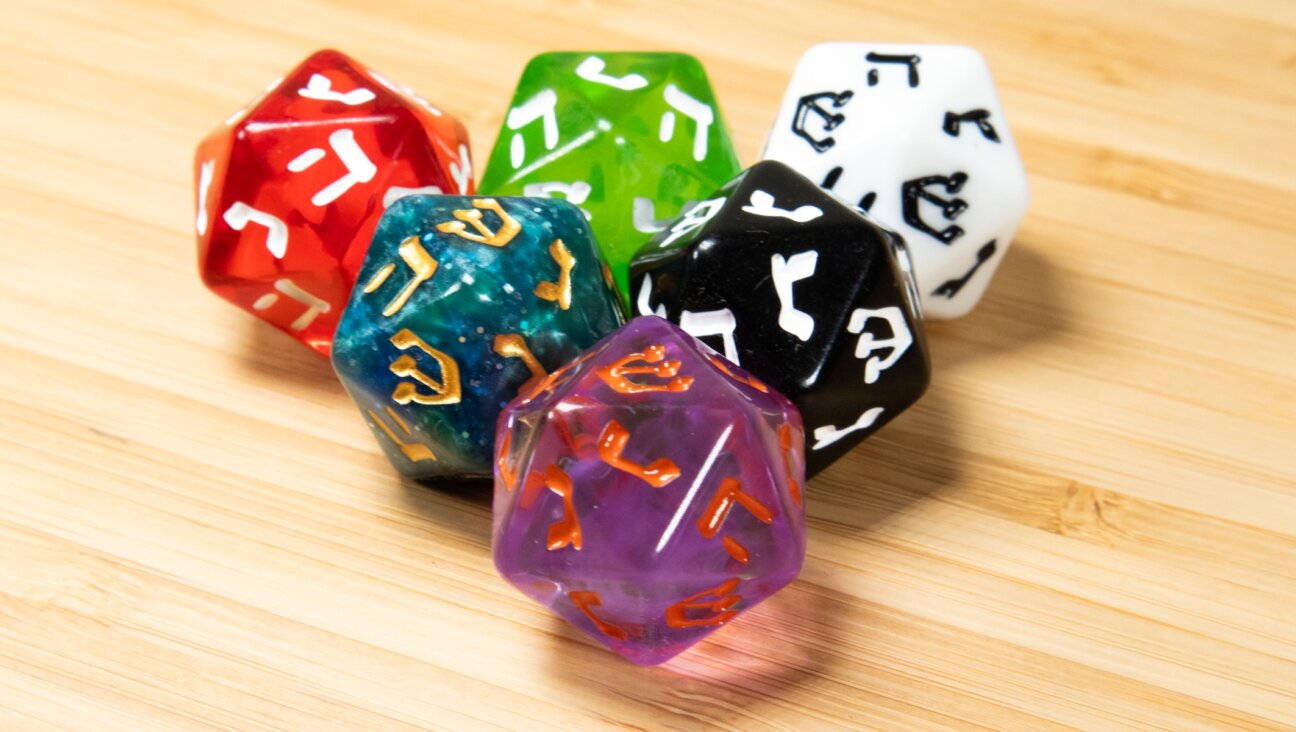Money Hole
‘Knesset member Meli Polishuk-Bloch accused officials of the ministry’s Bureau of the Budget of ‘viewing everything through the hole in the grush,’” Ha’aretz reported in a November 18 news item regarding the Israeli Finance Ministry’s decision to scale back a number of projected desalination plants for financial reasons. And on a different page of the same day’s paper, columnist Avirama Golan, speaking of the nostalgia some Israelis feel for an economically Spartan but simpler past, writes, “A few old-timers long for the difficult days when the grush still had a hole in it.”
So: What’s a grush (pronounced “groosh”), why did it have a hole, and why does it no longer have one?
Let’s start with the first question. When the British conquered Palestine from the Turks in 1917 and 1918, they found a local currency based on the Turkish pound, a gold coin also known as a mejidi because it bore the image of Sultan Abdel Majid, in whose brief reign (1839-1861) it first was minted. The mejidi was divided into 100 grush, a silver coin etymologically related to the Austrian groschen, the Polish grosz, the Italian grosso and various other European currencies whose names all derived from the Roman denarius grossus or “heavy dinar.” Also known as the piaster, the grush, having declined steeply in value over a long period, was worth about two-thirds of a British penny in the last decades of Turkish rule in Palestine.
As was the case with many of the Turkish coins that circulated in the Ottoman Empire, the grush often had a small hole in it — one it did not emerge with from the mint but that was rather punched in it by its users, who commonly kept their change on strings or wires instead of in purses and sometimes threaded it in the form of necklaces worn by women that were quickly convertible into cash. These holes were of varying sizes and in different parts of the coin, and the British, in designing their own Palestinian currency, decided to forestall such individual initiative by minting the more valuable coins with a single, standardized, ready-to-use hole at the center.
They were not the first to do this. For centuries, the Chinese had minted square-holed coins for stacking on bamboo rods. The British, however, opted for a round hole, replaced the Turkish mejidi with a paper pound sterling of their own, divided this into a thousand units called “mils,” and minted coins of one mil, two mils, five mils and 10 mils, of which the two larger ones came with holes. (The hole-less one mil coin, which had a picture of a tree on one side and the word “Palestine” in English, Arabic and Hebrew on the other, caused a political crisis in the early 1920s when Zionist leaders insisted that “Palestine” be changed in Hebrew to Eretz Yisrael, “the Land of Israel.” In the end, the compromise of “Palestine (E.Y.)” was struck.) Since a hundredth of a Turkish pound had been known as a grush, this same word was now applied by the Jewish and Arab inhabitants of Palestine to a hundredth of a British pound — that is, to a coin of 10 mils.
And so the grush or 10-mil coin had a hole throughout the period of the British Mandate, which ended with the establishment of the state of Israel in 1948. The new Israeli government promptly issued a currency of its own, whose mainstay was the Israeli pound note or lira; since it contained 1,000 p’rutot, the colloquial term grush was now transferred to the 10-p’ruta piece. There was, though, no hole in this grush, nor in any Israeli coin, and after the p’ruta lost most of its worth with the depreciation of Israeli money in the 1950s, it was replaced in 1960 by the agora, of which there were 100 to the pound. For a while, the grush lingered on in Israeli Hebrew to denote the one agora piece. Gradually, however, the term faded from use and by the time the Israeli lira was itself renamed the shekel in the late 1970s, it had ceased to exist. Today, after a lifetime of many hundreds of years, grush is no longer a word for a specific coin.
Yet the grush lives on in a number of common Israeli idioms, some dating from the days when the word meant 10 mils or p’rutot and some from later. An item that is extremely cheap is said to cost grushim. If an Israeli wishes to say “I’m broke,” this may be expressed as eyn li grush, “I don’t have a grush,” or eyn li grush al ha-neshama, “I don’t have a grush on my soul.” Anyone talking simplistically about matters psychological, philosophical, political, et cetera is spouting psikhologiya (or filosofiya or politika) b’grush, that is, “a grush’s worth” of the subject. And, as we have seen, a person who measures things solely by their financial value sees them “through the hole in the grush.”
And something that happened a long time ago? Yes, indeed. That was when the grush had a hole in it.
Questions for Philologos can be sent to [email protected].
The Forward is free to read, but it isn’t free to produce

I hope you appreciated this article. Before you go, I’d like to ask you to please support the Forward.
Now more than ever, American Jews need independent news they can trust, with reporting driven by truth, not ideology. We serve you, not any ideological agenda.
At a time when other newsrooms are closing or cutting back, the Forward has removed its paywall and invested additional resources to report on the ground from Israel and around the U.S. on the impact of the war, rising antisemitism and polarized discourse.
This is a great time to support independent Jewish journalism you rely on. Make a Passover gift today!
— Rachel Fishman Feddersen, Publisher and CEO
Most Popular
- 1

Opinion My Jewish moms group ousted me because I work for J Street. Is this what communal life has come to?
- 2

Fast Forward Suspected arsonist intended to beat Gov. Josh Shapiro with a sledgehammer, investigators say
- 3

Fast Forward How Coke’s Passover recipe sparked an antisemitic conspiracy theory
- 4

Politics Meet America’s potential first Jewish second family: Josh Shapiro, Lori, and their 4 kids
In Case You Missed It
-

News Student protesters being deported are not ‘martyrs and heroes,’ says former antisemitism envoy
-

Opinion This Nazi-era story shows why Trump won’t fix a terrifying deportation mistake
-

Opinion I operate a small Judaica business. Trump’s tariffs are going to squelch Jewish innovation.
-

Fast Forward Language apps are putting Hebrew school in teens’ back pockets. But do they work?
-
Shop the Forward Store
100% of profits support our journalism
Republish This Story
Please read before republishing
We’re happy to make this story available to republish for free, unless it originated with JTA, Haaretz or another publication (as indicated on the article) and as long as you follow our guidelines.
You must comply with the following:
- Credit the Forward
- Retain our pixel
- Preserve our canonical link in Google search
- Add a noindex tag in Google search
See our full guidelines for more information, and this guide for detail about canonical URLs.
To republish, copy the HTML by clicking on the yellow button to the right; it includes our tracking pixel, all paragraph styles and hyperlinks, the author byline and credit to the Forward. It does not include images; to avoid copyright violations, you must add them manually, following our guidelines. Please email us at [email protected], subject line “republish,” with any questions or to let us know what stories you’re picking up.















